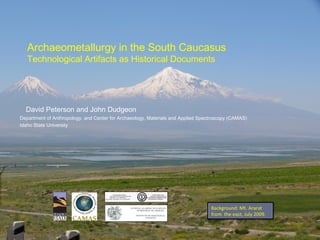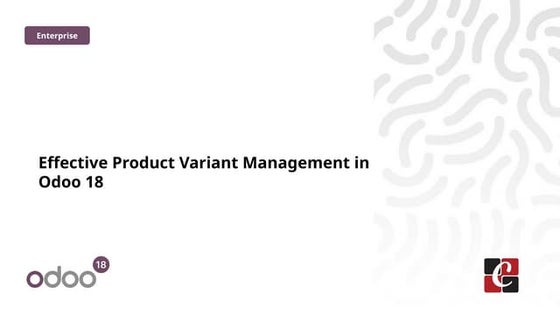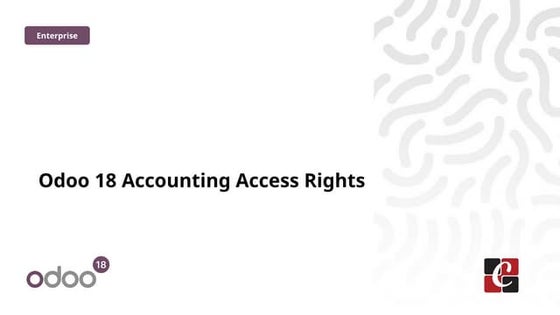Rocky Mountain European Scholars Consortium 2011
- 1. David Peterson and John Dudgeon Department of Anthropology, and Center for Archaeology, Materials and Applied Spectroscopy (CAMAS) Idaho State University Archaeometallurgy in the South Caucasus Technological Artifacts as Historical Documents
- 3. Metalworking Casting Annealing Forging Ingot Object PROCESS PRODUCT/ BY-PRODUCT Slag Mining Ore Processing Sorting Crushing Roasting Smelting Ore Ore Alloying Recycling Splash Scrap Co-smelting South Caucasus Archaeometallurgy Project Focus on networks that incorporated metallurgy in social relations
- 4. Largest Scale: Interregional E. N. Chernykh, Ancient Metallurgy in the USSR, 1992 Circumpontic Metallurgical Province ca. 3500-2000 BC Caucasus Zone Metallurgical Focus Metallurgical Focus Metalworking Focus Metalworking Focus Metallurgical Focus Eurasian Steppe Zone Metallurgical Focus Metalworking Focus Metalworking Focus Metallurgical Focus Metallurgical Focus
- 5. Intermediate Scale: Local D. Peterson, et al. Early Metal Technology and Related Practices in the Caspian Coastal Plain: Metalwork from the Velikent Cemetery, for Works of the Velikent Archaeological Expedition Volume 1: The Western Caspian Coastal Plain in the Early and Middle Bronze Age: Investigations at Velikent and Its Environs, edited by P. Kohl and R. Magomedov, forthcoming Early Bronze Age Metalwork from Velikent, Daghestan, ca. 2850 BC 0 20 40 60 80 100 120 Rings and Bracelets Other Ornaments Tools and Weapons Copper Arsenic Bronze Tin Bronze Copper+Silver Silver Rings Bracelets IntensityFrequency Copper Arsenic bronze Tin bronze Copper+Silver Silver Copper and Copper Alloys from Velikent, Daghestan (North Caucasus)
- 6. D. Peterson. Production and Social Complexity: Bronze Age Metalworking in the Middle Volga. In Social Complexity in Late Prehistoric Eurasia: Monuments, Metal, and Mobility, edited by B. Hanks and K. Linduff, pp. 187-214. New York: Cambridge University Press, 2009 Smallest Scale: Individual Copper and Bronze from Samara, Russia (Volga Region), ca. 2100-1900 BC Work Pattern 2 Annealed + light- moderate cold work (Chisel, Utevka VI, kurgan 6, grave 6; 300x enlarged) Work Pattern 3 Annealed + heavy cold work (Knife, Utevka VI, kurgan 6, grave 6) 0 5 10 15 20 25 Potapovka I Utevka VI WP 2 WP 3 Annealed+coldwork Annealed+coldworked+ annealed+heavy coldwork
- 7. 2009-2010 Geoarchaeological research ŌĆó 200 copper ore samples from 55 areas in 14 deposits for source analysis (chemistry and Pb isotopes) Artifact sampling ŌĆó LBA II - EIA I ŌĆó 199 (copper, bronze, tin, lead) Evaluation of archaeological sites for for continuing research ŌĆó Drmbon, Navzran, Drjahovit, Hankavan, Fioletovo, Margahovit, Koghb LA-ICP-MS artifact analysis ŌĆó Horom cemetery (LBA II - EIA I, 13th-9th centuries BCE) Armenia and Karabakh
- 8. Phase II: Marmarik Project (2012) Objectives ŌĆó Identify metallurgical activities and dating ŌĆó ArcGIS modeling of probable network relations surrounding different mining and metallurgical activities (e.g., fuel and ore, processing, smelting, metalworking), consumption, and their relationship to other activities (e.g., pastoralism in mining areas) ŌĆó Relationships in networks that incorporated metallurgy Hankavan Mining District of North-Central Armenia
- 9. Bracelets Horom Necropolis, Shirak Plain, Armenia . . Horom Artik Gegharot Lori Berd Erebuni .. ŌĆó LBA II-EIA I, 13th-9th centuries BCE ŌĆó 400 hectares ŌĆó Salvage of 160 burials 1987-89, unpublished ŌĆó American-Armenia investigations 1990, 1992, 1993 Site Plan: R. Badaljan et al., Archaeological Investigations at Horom in the Shirak Plain in North- West Armenian, 1990. Iran 30: 31- 48, 1993 T1 T2 Burial plans: R. Badaljan et al. Preliminary Report on the 1992 Excavations at Horom, Armenia. Iran 31: 1-24, 1993
- 10. Sample Preparation and Ablation Samples ŌĆó 50, copper-based ŌĆó Implements:Banding, wire, a dagger, and 22 arrowheads ŌĆó Ornaments: clothing plaques, rings, pins, hammered sheeting, pommels, and pendants ŌĆó Set in Buehler Epo-Thin epoxy, ground and polished Ablation ŌĆó New Wave UP-213 laser ablation system (on right) ŌĆó UHP helium and argon as carrier Drift correction and matrix suppression ŌĆó Laser ablation gas introduced with liquid internal standard (20 ppb Rh, Ru and Ir) Thermo X-II ICP- QMS New Wave UP 213 Laser Ablater
- 11. Analysis of unknowns ŌĆó 5 certified copper and bronze standards: ŌĆó B10, B12, 51.13-4, 71.32-4, SRM-494 Calibration ŌĆó Speakman and Neff(2005), Neff and Dudgeon (2006) EDS copper values Sample Heterogeneity EDS element maps ŌĆó Backscatter mode ŌĆó 20 kv ŌĆó Phasing in tin bronzes ŌĆó HFW 800, 1000 and 100 micrometers ŌĆó 500 micrometer raster pattern selected (with some variation on smaller samples) Standardization and Calibration Experimental Detection Limits Analyte (Isotope) Detection Limit (ppm) 27Al 1.01 55Mn 2.26 57Fe 12.89 59Co 0.18 62Ni 1.61 65Cu 2878.61 67Zn 0.77 75As 56.09 82Se 0.12 109Ag 1.35 117Sn 213.45 121Sb 2.88 139La 0.02 197Au 0.02 204Pb 9.84 209Bi 0.19
- 12. Results 0 10 20 30 40 50 60 70 80 90 100 Antimony 0 10 20 30 40 50 60 70 80 90 100 A r s e n ic 0 10 20 30 40 50 60 70 80 90 100 T in
- 13. Conclusions ŌĆó New information on the system of copper-based metallurgy in the South Caucasus in the LBA - EIA ŌĆó Hypothesis: In the western zone that included present- day Armenia, artisans tended to reserve primary alloys for implement. Antimony appears to have been an extender of the bronze supply, possibly mixed with recycled materials. ŌĆó Promise for the use of (relatively inexpensive and accessible) LA-ICP-MS with EDS for characterizing metal groups and trace elements associated with the ores that were used to discriminate intentional from accidental alloying.
- 14. Funding Agencies ’é▓ American Councils for International Education / National Councils for Eurasian and East European Research ’é▓ US National Endowment for the Humanities ’é▓ Office of Research, Faculty Research Committee and Humanities and Social Sciences Research Committee, Idaho State University Research Centers / Institutes ’é▓ Center for Archaeology, Materials and Applied Spectroscopy, Idaho State University ’é▓ Institute for Archaeology and Ethnography, National Academy of Sciences, Republic of Armenia (NAS RA) ’é▓ Institute of Geological Sciences, NAS RA ’é▓ Institute for the History and Archaeology of the Volga ’é▓ Institute of Archaeology, Daghestan Branch of the Russian Academy of Sciences Acknowledgments Thank you! Students and Colleagues from ’é▓ Idaho State University ’é▓ Field Museum of Natural History ’é▓ Oxford Materials ’é▓ Wellesley College
Editor's Notes
- #3: Our project is a collaboration by researchers from the Institutes of Archaeology and Geological Sciences of the National Academy of Sciences of the Republic of Armenia, and my home institution, Idaho State University. Evidence for prehistoric mining and metallurgical activities, and the numerous copper ore deposits in the Armenian highlands, have made early copper and bronze production an important focus of archaeometallurgy in the region. By the Late Bronze Age in the late 2nd millennium BC, the unique developments of antimony smelting and antimony bronze became complements to the arsenic and tin bronze that first appeared as far back as the 4th millennium BC. Much of what I talk about today will concern these interesting and important late developments, which often take a backseat to a focus on the origins of metallurgy, the tin problem, and similar themes focused on the 4th and 3rd millennia.
- #4: This relates in part to something discussed earlier this week, the chaine operatoire of activities that were linked together in a common purpose. Here I am attempting to show how this can be conceptualized in relation to products of the process. Workshops, installations and various tools need to be added in the proper places as well. MaussŌĆÖs concept of chaine operatoire was focused on individual gestures, and we have no illusions of doing that. But broken down in terms of evidence for for individual and communal activity this is a very useful conceptl for structuring research and addressing relationships between activities and their broader implications.
- #5: This relates in part to something discussed earlier this week, the chaine operatoire of activities that were linked together in a common purpose. Here I am attempting to show how this can be conceptualized in relation to products of the process. Workshops, installations and various tools need to be added in the proper places as well. MaussŌĆÖs concept of chaine operatoire was focused on individual gestures, and we have no illusions of doing that. But broken down in terms of evidence for for individual and communal activity this is a very useful conceptl for structuring research and addressing relationships between activities and their broader implications.
- #6: This relates in part to something discussed earlier this week, the chaine operatoire of activities that were linked together in a common purpose. Here I am attempting to show how this can be conceptualized in relation to products of the process. Workshops, installations and various tools need to be added in the proper places as well. MaussŌĆÖs concept of chaine operatoire was focused on individual gestures, and we have no illusions of doing that. But broken down in terms of evidence for for individual and communal activity this is a very useful conceptl for structuring research and addressing relationships between activities and their broader implications.
- #7: This relates in part to something discussed earlier this week, the chaine operatoire of activities that were linked together in a common purpose. Here I am attempting to show how this can be conceptualized in relation to products of the process. Workshops, installations and various tools need to be added in the proper places as well. MaussŌĆÖs concept of chaine operatoire was focused on individual gestures, and we have no illusions of doing that. But broken down in terms of evidence for for individual and communal activity this is a very useful conceptl for structuring research and addressing relationships between activities and their broader implications.
- #8: Since we began in 2009, weŌĆÖve made modest but substantial accomplishments that will continue to grow in future seasons. We conducted fieldwork in 2009 and 2010 that collected some 200 samples of ore from 55 areas within 14 deposits across Armenia, and 199 samples of Late Bronze and Early Iron Age metalwork. We have also examined numerous archaeological sites known or believed to have been involved in early copper metallurgy, including Karmir Blur near Drmbon in Karabakh, Nazvran, Djrahovit, Margahovit, Hankavan, and Koghb. Most recently we completed Laser Ablation Inductively Coupled Plasma Mass Spectrometry (or LA-ICP-MS) of 50 pieces of metalwork from from the Horom necropolis, in the Shirak marz of northwestern Armenia.
- #9: Our work to date has enabled us to select a group of sites in the Margahovit mining district, of Lori marz in northern Armenia, for remote sensing and excavation beginning in 2012. The geologist S. Goginyan identified these sites near copper ore outcrops in the 1960s (2005). Until now theyŌĆÖve remained unexplored, except for Fioletovo which was excavated briefly by Gevorkyan and Palmieri 15 years ago (2001). Our excavations will aim to recover evidence metallurgical activities practiced at the sites, and probable relationships between them in networks that encompassed metal-related activities and the consumption of metalwork. We plan to model these in ArcGIS and with network analysis software. Another aspect will be examination of other activities that metallurgy depended on, like pastoralism and animal transport in upland mining areas.
- #10: This relates in part to something discussed earlier this week, the chaine operatoire of activities that were linked together in a common purpose. Here I am attempting to show how this can be conceptualized in relation to products of the process. Workshops, installations and various tools need to be added in the proper places as well. MaussŌĆÖs concept of chaine operatoire was focused on individual gestures, and we have no illusions of doing that. But broken down in terms of evidence for for individual and communal activity this is a very useful conceptl for structuring research and addressing relationships between activities and their broader implications.
- #11: The LA-ICP-MS analysis of 50 metal artifacts from Horom burials was conducted under the supervision of Dr. John Dudgeon at the CAMAS laboratory at Idaho University. I worked on the SEM-EDS that helped calibrate the ICP-MS analysis. Ideally, we would do chemical analysis by XRF or Neutron Activiation, and Pb isotopes by TIMS or Multi-Collectior ICP-MS. While we seek the funding for that, we have used a portion of the samples to explore what we can do with this instrumentation have in our laboratory. IMPLEMENTS:wire, a dagger, and majority of arrowheads ORNAMENTS: clothing plaques, rings, pins, hammered sheeting, sowrd pommels, and pendants Ablation was performed on ground and polished surfaces of 50 copper-based samples embedded epoxy. They were ablated with a New Wave UP-213 laser ablation system operated in imaged aperture mode. Ultra High Purity helium was the laser cell sweep gas, and mixed with UHP argon before entering the plasma torch. Our ICP-MS system permits the simultaneous introduction of laser ablation gas and liquid internal standard ŌĆō 20 ppb each of rhodium, ruthenium and iridium ŌĆō to visualize and correct for instrument drift and the matrix suppression that can occur in ablating a relatively soft material like copper.
- #12: EDS element mapping was used to examine sample heterogeneity and to determine the 500 x 500 micrometer raster used for ablation. Analysis was performed with 5 certified copper and bronze standards, and we are grateful to Laure Dussubieux for giving us portions of 4 The basic approach to data calibration is a slight modification of that described previously by Speakman and Neff (2005) and Neff and Dudgeon (2006). The detector has difficulty dealing with copper as a high-level matrix element, so we developed a procedure to externally measure the copper concentration at each ablation site with our Bruker Quantax 200 SDD-EDS. Replicate EDS measures of copper were averaged and the mean value was used in the correction of the unknowns. The detection limits for the experiment are given.
- #13: The data collected can only be briefly summarized, and I will do so mostly in terms of alloys and not trace elements, which I think require more work or at least comparison with another method. We detected copper, tin bronze(Sn - ppm) and arsenic bronze (As - ppm), both unleaded and with lead to * ppm, ternary alloys of copper-tin-arsenic and copper-tin-antimony, copper-tin-antimony with lead, and copper-tin-arsenic with antimony and lead (elements are ordered in their relative proportion in the objects). Antimony levels are lower than other alloy constituents, ranging from * to * ppm. Unalloyed copper, arsenic bronze and tin bronze seem to have been the materials of choice. Aram Gevorkyan previously analyzed 47 samples from the Horom site by arc OES. In these analyses, copper was not quantified and values for other elements were not normalized. Only 28 of the 47 samples could be assigned the same metallurgical group, 19 could not. The OES data was not normalized to copper, as was the case with the LA-ICP-MS result. Generally, tin, arsenic and lead values were higher for the LA-ICP-MS than OES analysis of the same samples, and normalization with LA-ICP-MS probably makes it more reliable makes LA-ICP-MS. Variation in the lead values may also be due to segregation within the sample. Chernykh (1992) divided the metalwork from the Caucasus from this period into a western Koban-Colchis group, and an eastern group that encompasses the Caspian coast and the remainder of the South Caucasus. Pike (2000) found this division viable in an ICP-AES analysis of LBA metalwork in the British Museum. Pike found a greater tendency for antimony bronze in the Koban, and greater reliance on arsenic bronze and tin bronze in the South. He allowed that this may have been due to bias in the collection, but our findings of higher proportions of copper and primary copper and tin alloys support his observations for the South Caucasus in the British Museum collection. He also argued that antimony may have been used as a substitute for tin which is scarce before the late 1st millennium BC in the Caucasus--this is supported by the pattern we see of antimony being used as a kind of extender for ornaments made with alloys with three to five constituents.
- #14: The image here is of a ceremonial standard of this period believed to represent the solar system. We grouped these under ornaments, but perhaps it is more correct to group them, if anything, as Ornaments and Ceremonial objects, except all grave goods are really ceremonial objects. When we began, Aram Gevorkyan challenged me to show our instrumentation worked as well as arc OES. Since our proposed budget was cut, in the short term we had to sacrifice analysis for field work while we planned the next stage of work and sought funding for assistance with XRF, Neutron Activation and MC-ICP-MS. We think we have shown this, but the real proof will be comparison of the current results with these other methods. We have been able to analyze objects that have sat for 20 years, and shed new light on the intriguing use of antimony in copper-based metallurgy and to add independent examination to hypotheses posed by other researchers concerning the system of LBA metallurgy in the South Caucasus. On this basis, we would argue that the artisans who produced the Horom metalwork more carefully reserved primary alloys for producing implements, while antimony does appear to have been an extender of the bronze supply, possibly mixed with recycled materials. We also think it shows the promise of the use of relatively inexpensive LA-ICP-MS with EDS in the post-OES analytical environment, for characterizing metal groups, and if not for sourcing, and least for examining some patterns in trace elements associated with































![Utegen report[818].pdf](https://cdn.slidesharecdn.com/ss_thumbnails/utegenreport818-221118190902-1073107d-thumbnail.jpg?width=560&fit=bounds)






























